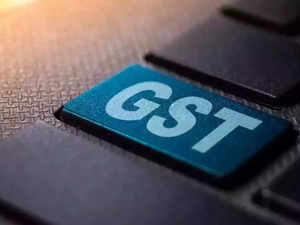 Getty Images
Getty ImagesIt has been half a decade since its implementation, and it has been nothing short of a roller coaster ride for both the industry and the Government. Digitisation of tax compliances and the use of technology tools for tax administration has been a game-changer, which resulted in efficiencies when compared with the erstwhile, archaic regime. This has been possible because of the introduction of a ‘one-stop-shop’ portal ‘GSTN’, for all compliances. While the positives of GST are many, some ground still needs to be covered as far as the implementation efforts go, especially to ease the burden on taxpayers.
While the Government has been largely successful in the creation of a unified levy for the supply of goods and services, it still demands a simpler structure and lower compliance burden, in line with the country’s overarching aim of ease of doing business.
Despite consistent efforts and commitments by the Government over the last few years, the GST law has witnessed many disputes causing protracted litigations. Problems related to transitional credit, refunds of taxes, export and import complexities, E-way bill structures and many other areas have created a lot of scope for disputes and litigations.
There is no doubt that the Government has put in its best efforts to clarify the issues to avoid confusion prevailing among taxpayers, however, there are many disputes that need prompt addressing so that litigation/disputes can be avoided.
Having said that, it is imperative to note that the Government has considered several procedural changes to streamline the tax system and smoothen the functioning of the law in the country. Numerous objectives have been achieved in the GST regime with the implementation of new provisions for compliance by the taxpayers. For the first time, tax administrations at the Centre and the State will have an identical value for assessments under respective tax laws under a single return. One key area that requires attention is compliance ease by removal of multiple reporting in the form of E-way Bills, E-Invoices, submission of input tax credit details, etc. It is expected that the government’s plan for auto-filling returns would bear fruit in the coming days.
The decision to digitise the tax system has helped tax authorities as well as businesses. Initially, the transition from a multi-tax manual environment to a technology-driven GST environment was difficult to adapt to, however, now that businesses and authorities have started adopting this technology-driven environment, it has brought various advantages to them.
With the help of the introduction of digitisation tools like e-invoicing, e-way bills, etc., tax authorities have access to a large volume of data to track tax leakages and policy formulations using data analytics tools. It has given them capabilities to proactively identify leakages or any inconsistencies at the transactional level, which they can use to detect and curtail frauds.
Equally, it has given businesses insights into ITC leakages and consequent working capital losses which have helped them make informed decisions about gaps and thereby take actions to plug them. It has also helped in eliminating the need for keeping physical documents.
Having said that there are many challenges to effectively implement compliances and reporting. Frequent technical glitches require quick fixes to avoid disruptions. Frequent revisions to the rules and tax processes such as those relating to the restructuring of items across tax slabs, threshold exemption limits and the filing of returns, etc., have not helped either.
A transparent taxation system involves reciprocity, on one hand, the tax administration commits itself to making tax compliance easier and certain and on the other taxpayers put their cards on the table. It is expected that the future of GST reporting would be standardised and less cumbersome for taxpayers and administrators alike.
(The writer is Partner - Technology Products and Solutions, BDO Digital)











 Get Unlimited Access to The Economic Times
Get Unlimited Access to The Economic Times
